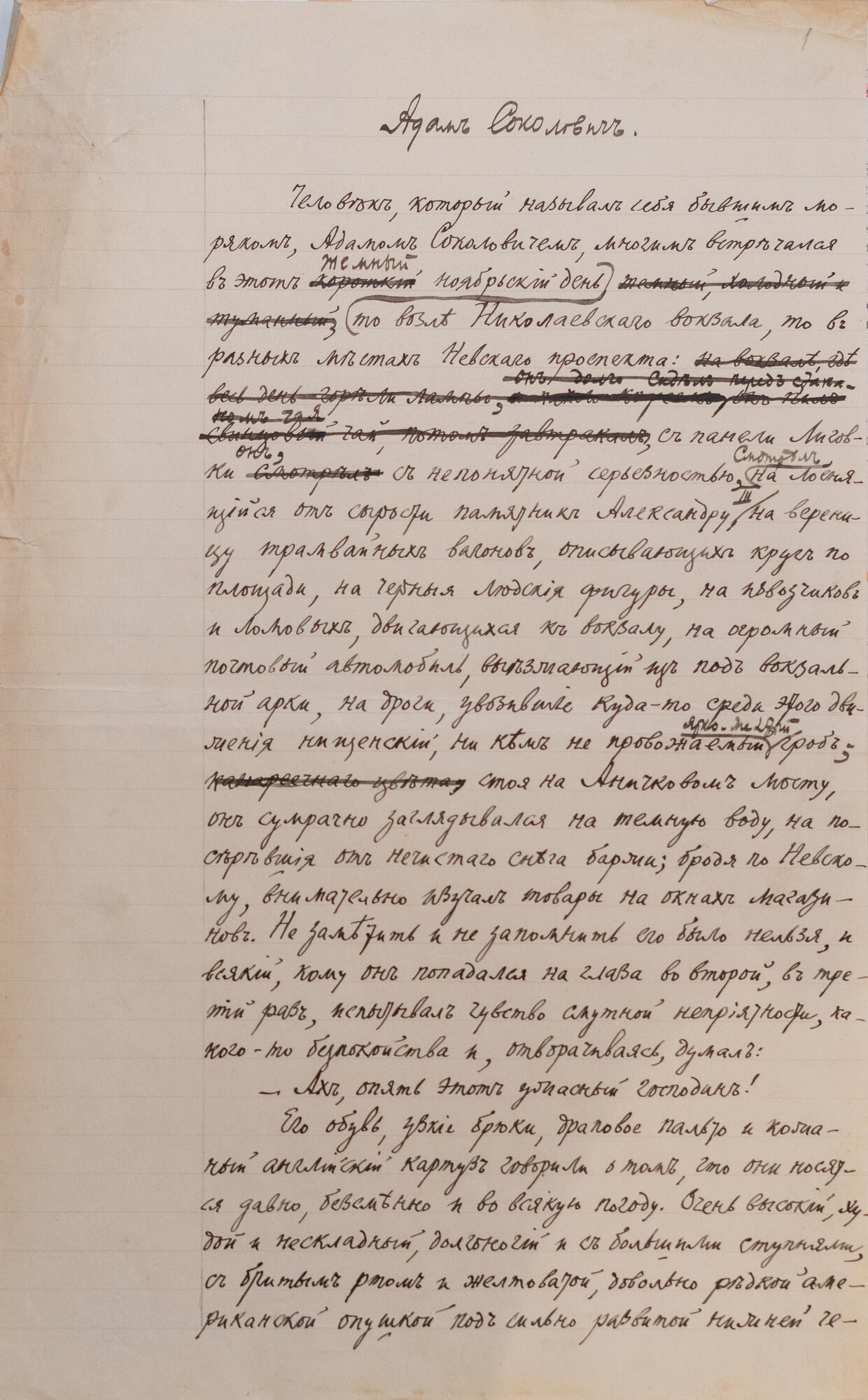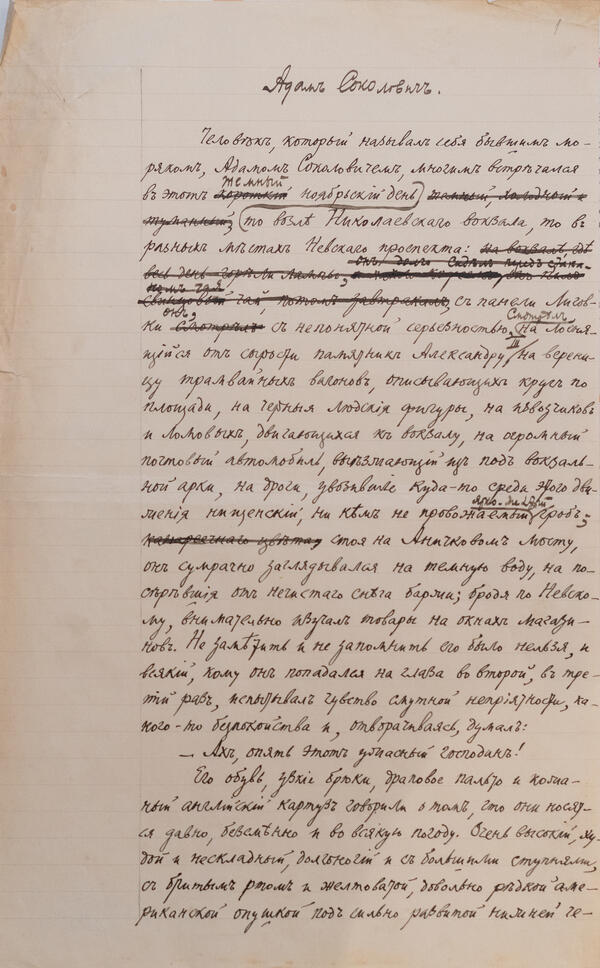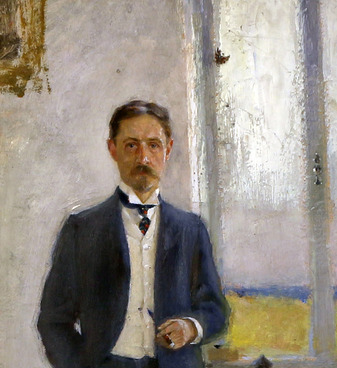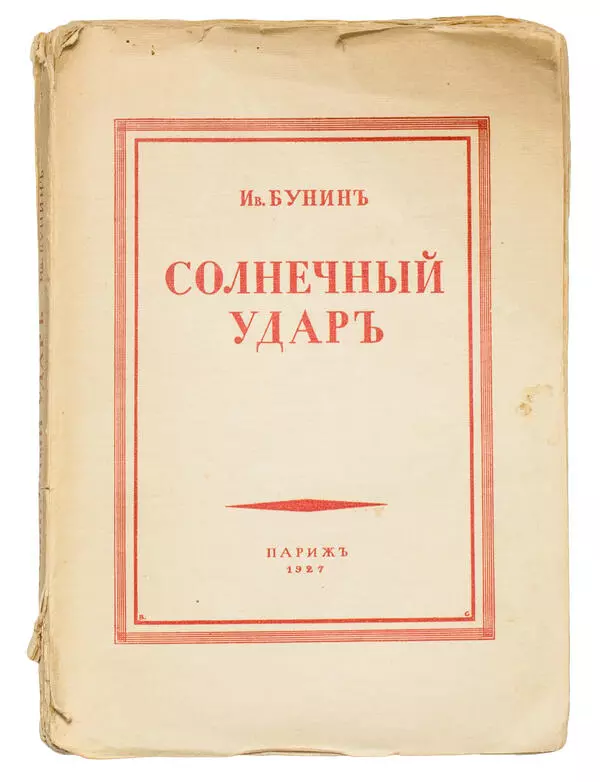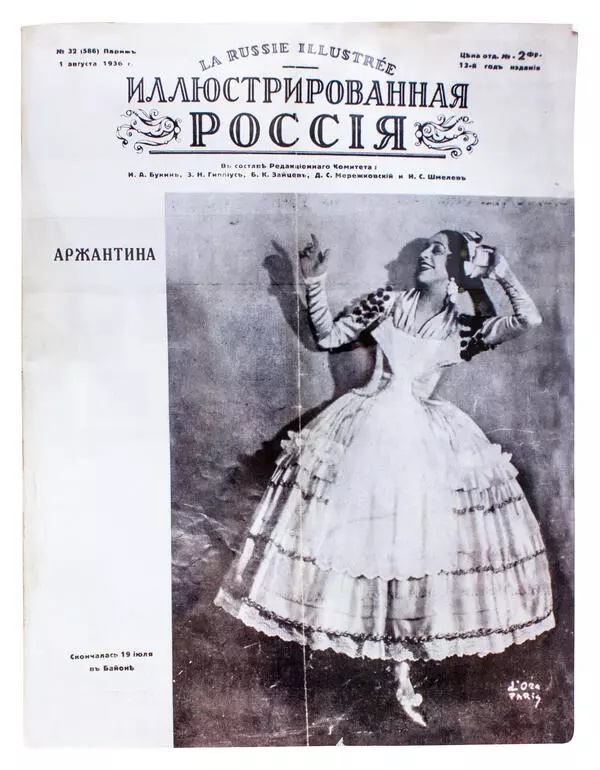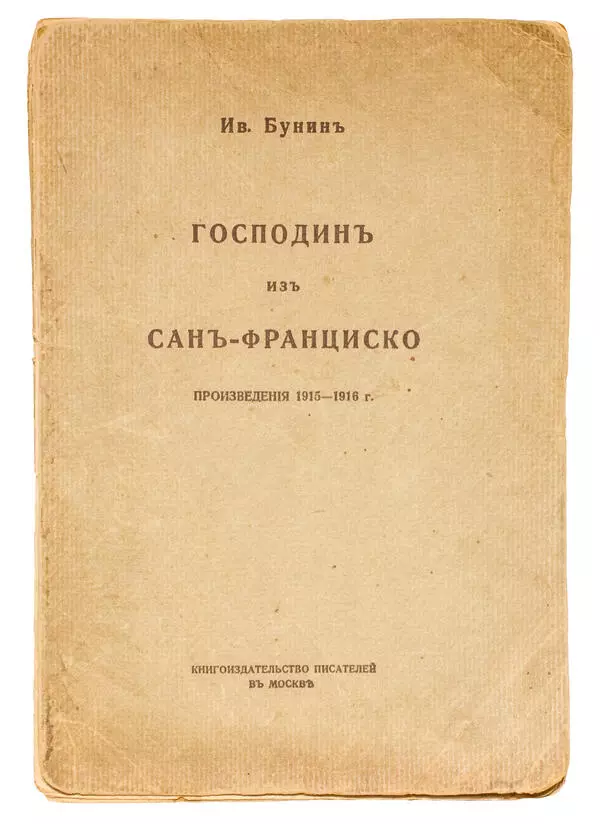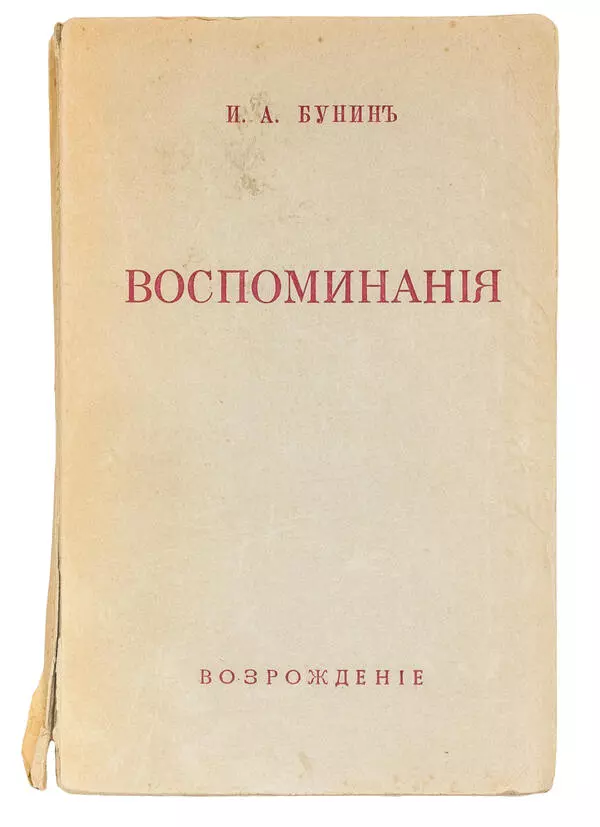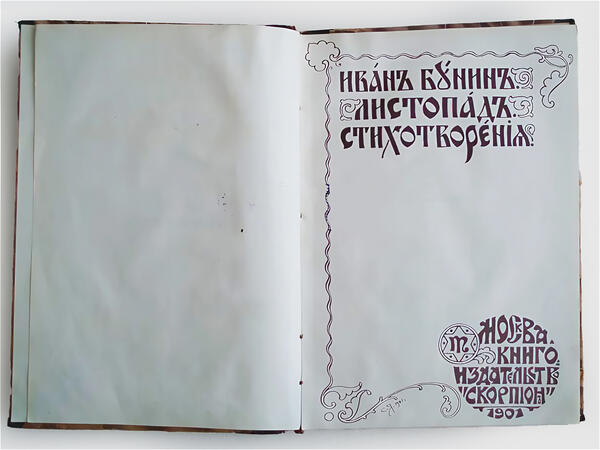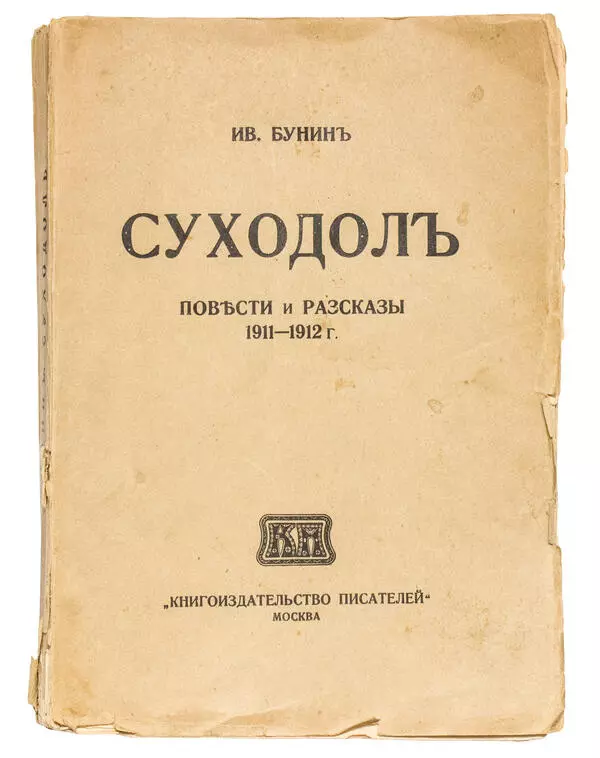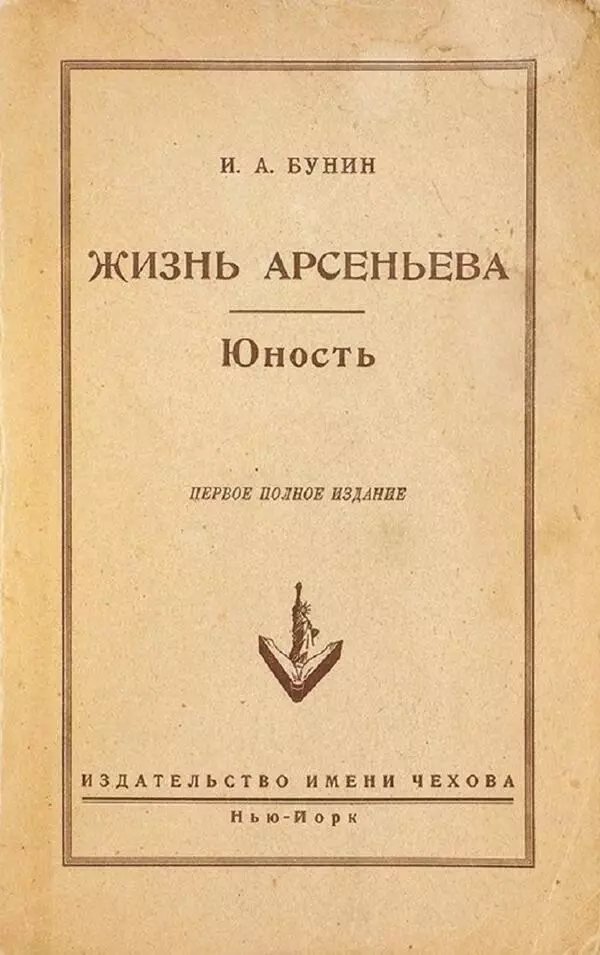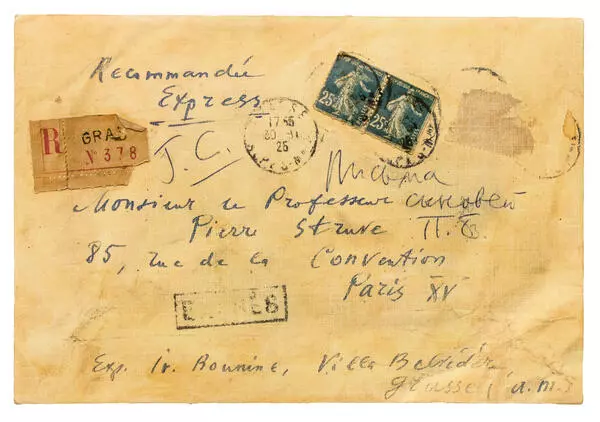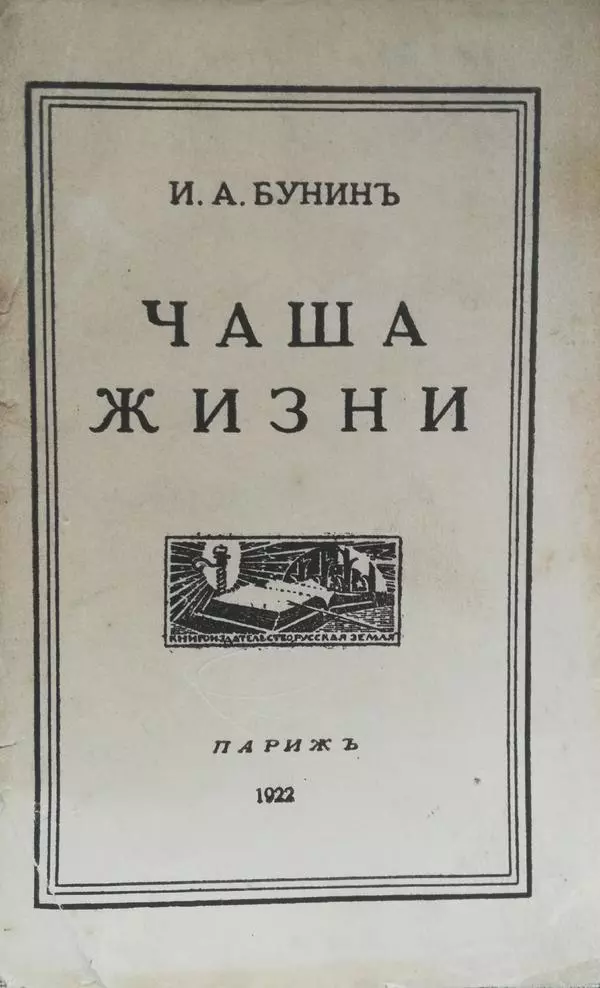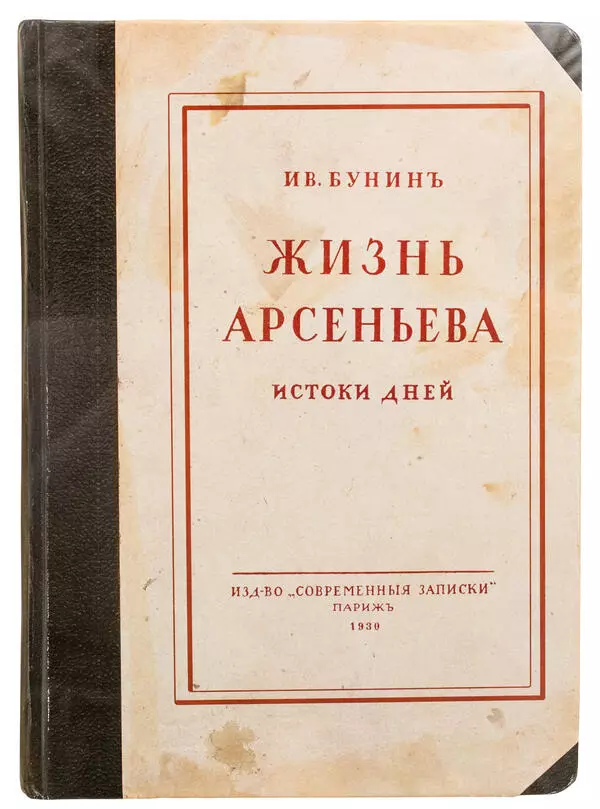Ivan Bunin worked on the story ‘Loopy Ears’ for a long time and changed its title more than once: he considered, in particular, the variants ‘Untitled’ and ‘Adam Sokolovich’. As a result, the finished work was included in the Moscow collection of 1917 ‘Slovo’ (‘The Word’).
The main character of the story is ‘a man who called himself a former sailor, Adam Sokolovich, met by many on this short November day, cold and foggy’, a man ‘unusually thin and awkward… with a gloomy, unfriendly and focused face’. In a cheap St. Petersburg restaurant, Sokolovich talks to two sailors and draws the attention of his companions to the unusual shape of his ears. ‘Geeks, geniuses, vagabonds and murderers have loopy ears, that is, they look like a loop – the one that they are strangled with’, he explains. He also argues that many people have lost their conscience and become indifferent to murders, after which he adds: ‘The passion for murder and, in general, for all cruelty is in… everyone. And there are those who experience a completely invincible thirst for murder… and having killed, not only they do not suffer, but, on the contrary, come back to normal, feel relief… And in general it is time to abandon this tale of pangs of conscience, of horrors, as if pursuing the murderers. Enough to write novels about crimes with punishment, it’s time to write about a crime without any punishment’.
“Loopy Ears” is one of “scary” short stories by Ivan Bunin. Literary scholars consider this work to be a creative polemic between the writer and Fedor Dostoevsky: in this story Bunin described a crime that was not followed by any punishment, and embodied the destructive, painful moods of Russian society before revolution of 1917.
The main character of the story is ‘a man who called himself a former sailor, Adam Sokolovich, met by many on this short November day, cold and foggy’, a man ‘unusually thin and awkward… with a gloomy, unfriendly and focused face’. In a cheap St. Petersburg restaurant, Sokolovich talks to two sailors and draws the attention of his companions to the unusual shape of his ears. ‘Geeks, geniuses, vagabonds and murderers have loopy ears, that is, they look like a loop – the one that they are strangled with’, he explains. He also argues that many people have lost their conscience and become indifferent to murders, after which he adds: ‘The passion for murder and, in general, for all cruelty is in… everyone. And there are those who experience a completely invincible thirst for murder… and having killed, not only they do not suffer, but, on the contrary, come back to normal, feel relief… And in general it is time to abandon this tale of pangs of conscience, of horrors, as if pursuing the murderers. Enough to write novels about crimes with punishment, it’s time to write about a crime without any punishment’.
When dusk falls on the city, Sokolovich goes to Nevsky avenue, where “fancy women, careless in appearance, but chilled to the bone from icy damp wander at a walking pace”. With one of them, the hero of the story goes to the hotel and goes up to the room, from where he comes out the next morning, hands over the payment to the hotel clerk and goes to the stairs “calmly”. The hotel clerk, seeing off the guest, enters his room, where he founds out that “the short bare legs of a woman lying supine were sticking out from under the blanket. Her head was crushed by two pillows”.
“Loopy Ears” is one of “scary” short stories by Ivan Bunin. Literary scholars consider this work to be a creative polemic between the writer and Fedor Dostoevsky: in this story Bunin described a crime that was not followed by any punishment, and embodied the destructive, painful moods of Russian society before revolution of 1917.
